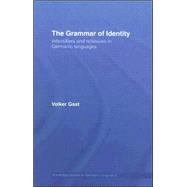
Note: Supplemental materials are not guaranteed with Rental or Used book purchases.
Purchase Benefits
What is included with this book?
| List of tables | ix | ||||
| List of figures | x | ||||
| Acknowledgements | xi | ||||
| Abbreviations and glosses | xiii | ||||
| 1 Introduction | 1 | (21) | |||
|
1 | (2) | |||
|
3 | (3) | |||
|
6 | (2) | |||
|
8 | (1) | |||
|
9 | (13) | |||
| 2 The distribution and morphology of head-adjacent SELF | 22 | (14) | |||
|
22 | (8) | |||
|
30 | (6) | |||
| 3 Head-adjacent intensifiers as expressions of an identity function | 36 | (30) | |||
|
36 | (4) | |||
|
40 | (4) | |||
|
44 | (2) | |||
|
46 | (12) | |||
|
58 | (7) | |||
|
65 | (1) | |||
| 4 The syntax of head-distant intensifiers | 66 | (33) | |||
|
66 | (12) | |||
|
78 | (3) | |||
|
81 | (3) | |||
|
84 | (13) | |||
|
97 | (2) | |||
| 5 Combinatorial properties of head-distant intensifiers | 99 | (18) | |||
|
99 | (13) | |||
|
112 | (4) | |||
|
116 | (1) | |||
| 6 The interpretation of head-distant intensifiers | 117 | (37) | |||
|
117 | (4) | |||
|
121 | (7) | |||
|
128 | (5) | |||
|
133 | (4) | |||
|
137 | (4) | |||
|
141 | (12) | |||
|
153 | (1) | |||
| 7 Reflexivity and the identity function | 154 | (43) | |||
|
155 | (8) | |||
|
163 | (8) | |||
|
171 | (7) | |||
|
178 | (1) | |||
|
179 | (2) | |||
|
181 | (5) | |||
|
186 | (9) | |||
|
195 | (2) | |||
| 8 The grammar of reflexivity in Germanic languages | 197 | (23) | |||
|
198 | (5) | |||
|
203 | (4) | |||
|
207 | (11) | |||
|
218 | (2) | |||
| Notes | 220 | (11) | |||
| Sources | 231 | (2) | |||
| References | 233 | (13) | |||
| Indices | 246 | (1) | |||
| Author index | 246 | (4) | |||
| Language index | 250 | (1) | |||
| Subject index | 251 |
The New copy of this book will include any supplemental materials advertised. Please check the title of the book to determine if it should include any access cards, study guides, lab manuals, CDs, etc.
The Used, Rental and eBook copies of this book are not guaranteed to include any supplemental materials. Typically, only the book itself is included. This is true even if the title states it includes any access cards, study guides, lab manuals, CDs, etc.